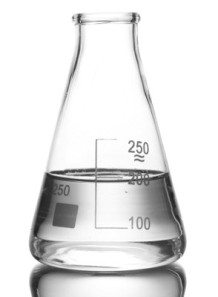PPG-3 Methyl Ether (Tripropylene Glycol Methyl Ether, TPM)
- Product Code: 252949
slow‑evaporating, “non‑tacky” solvent is needed: hair sprays, colourants, styling mousses/gels; facial toners, serums and essences; make‑up primers, foundations and powder
slow‑evaporating, “non‑tacky” solvent is needed: hair sprays, colourants, styling mousses/gels; facial toners, serums and essences; make‑up primers, foundations and powder
PPG‑3 Methyl Ether (Tripropylene Glycol Methyl Ether, TPM)
EWG’s product database and public ingredient lists show TPM appearing in a broad spread of categories—especially where a slow‑evaporating, “non‑tacky” solvent is needed: hair sprays, colourants, styling mousses/gels; facial toners, serums and essences; make‑up primers, foundations and powders; deodorants, cleansing wipes and nail‑polish removers.
Key facts
| Key facts | Summary |
|---|---|
| CAS No. | 25498‑49‑1 |
| Primary cosmetic function | Solvent/coupling agent (helps dissolve or keep otherwise‑insoluble fragrance oils, UV filters, dyes, actives, etc. in water‑rich formulas) |
| Typical use level | 0.4 – 2 % in finished products; higher (≤ 5 %) occasionally reported for cleansers & wipes |
| Physical profile | Clear, low‑odour liquid; fully water‑miscible; b.p. ≈ 236 °C, flash > 93 °C; very low vapour pressure (<0.1 mm Hg @ 25 °C) |
Why formulators pick it
| Formulating need | What TPM adds |
|---|---|
| Strong but gentle solvency | Dissolves a wide polarity range (fragrances, UV filters, some silicones, bioactives) while remaining completely miscible with water. |
| Low volatility / flash | Evaporates ~6‑10 × slower than ethanol or DPM, minimizing fragrance lift‑off, reducing “cooling” feel, and lowering VOC contribution in aerosol‑free formats. |
| Coupling & clarity | Prevents phase separation or cloudiness when small amounts of hydrophobes are introduced into clear toners, micellar waters or hydro‑gel masks. |
| Sensory modifier | At 1–3 % it cuts the stickiness of glycerin/DPG, leaving a fresh, emollient after‑feel. |
| Penetration helper | Patents and in‑vitro work show TPM can boost transdermal delivery of actives (e.g. antifungals, photosensitisers) when used at 5–30 % in adhesive or semi‑occlusive systems. |
Safety & regulatory status
- EU: Listed in CosIng only as a “Solvent”; not restricted in Annex II/III, so it may be used without a specific concentration cap provided finished‑product safety is demonstrated.
- US/Canada/Japan: No specific prohibition; CIR Expert Panel concluded TPM (PPG‑3 Methyl Ether) is “safe as used” in cosmetics at the concentrations reported (0.4–2 %).
- Toxicology highlights: Low acute toxicity, minimal skin/eye irritation, not sensitising or genotoxic; rapid renal clearance if absorbed. Aerosol particle sizes in hair sprays are typically non‑respirable.
Formulation tips & compatibility checklist
- Target pH 3–10: TPM is stable and shows no hydrolysis across normal cosmetic pH ranges.
- Water first: Add TPM after water‑soluble humectants; it will self‑couple oils.
- Plastic compatibility: Avoid Buna‑N, neoprene, and certain butyl rubbers in gaskets—these swell in prolonged TPM contact; stainless‑steel or PTFE parts are preferred in process equipment.
- Flash‑point buffer: With its 93 °C flash point, TPM usually keeps even alcohol‑containing sprays in the “combustible” (not “flammable”) class, easing shipping.
- Aerosols: Because of slow evaporation, pair TPM with a faster co‑solvent (e.g., ethanol 10–25 %) to optimise drying time in hair sprays or setting sprays.
- Preservatives: Fully miscible with phenoxyethanol, ethylhexylglycerin and most parabens; no known negative synergy.
Quick formulation reference
| Product idea | Typical TPM % | Benefit delivered |
|---|---|---|
| Clear hair spray (pump) | 1.0 % | Keeps fragrance & resin soluble; reduces VOC total |
| Fragrance‑rich micellar water | 0.5 % | Prevents oil “floaters,” improves clarity |
| Hydrogel essence mask | 1.5 % | Cuts tack, boosts skin feel |
| Nail‑polish remover pads (non‑acetone) | 3–4 % | Slow evaporation → longer “wet” time to dissolve lacquer |
| Transdermal patch adhesive | 10–25 % | Solvent + permeation enhancer for drug crystals |
Take‑aways
- TPM is essentially the “slow, soft, water‑friendly” member of the propylene‑glycol‑ether family—perfect when you need strong solvency without the sharp odour or quick flash of lower‑glycol ethers.
- It is broadly permitted and judged safe at up‑to‑low‑single‑digit percentages in leave‑on and rinse‑off products.
- Treat it as a multi‑purpose helper: solvent, coupling aid, humectant‑feel adjuster and (at higher levels) penetration booster—so long as your packaging elastomers and VOC targets are compatible.
Usage: Mix in serum, lotion or cream.
Mixing method: Can be mixed in several steps.
Usage rate: 1-20% (do not use more than 50%)
Product characteristics: Clear liquid, similar to oil.
Solubility: Soluble in water.
Storage: Can be stored at room temperature, but close the bottle tightly and keep away from sunlight or heat. The product has a shelf life of at least 2 years.
INCI Name : PPG‑3 Methyl Ether
| Mechanism | - |
| Appearance | - |
| Longevity | - |
| Strength | - |
| Storage | - |
| Shelf Life | - |
| Allergen(s) | - |
| Dosage (Range) | - |
| Recommended Dosage | - |
| Dosage (Per Day) | - |
| Recommended Dosage (Per Day) | - |
| Mix Method | - |
| Heat Resistance | - |
| Stable in pH range | - |
| Solubility | - |
| Product Types | - |
| INCI | - |
Purchase History for
Cart
No products



